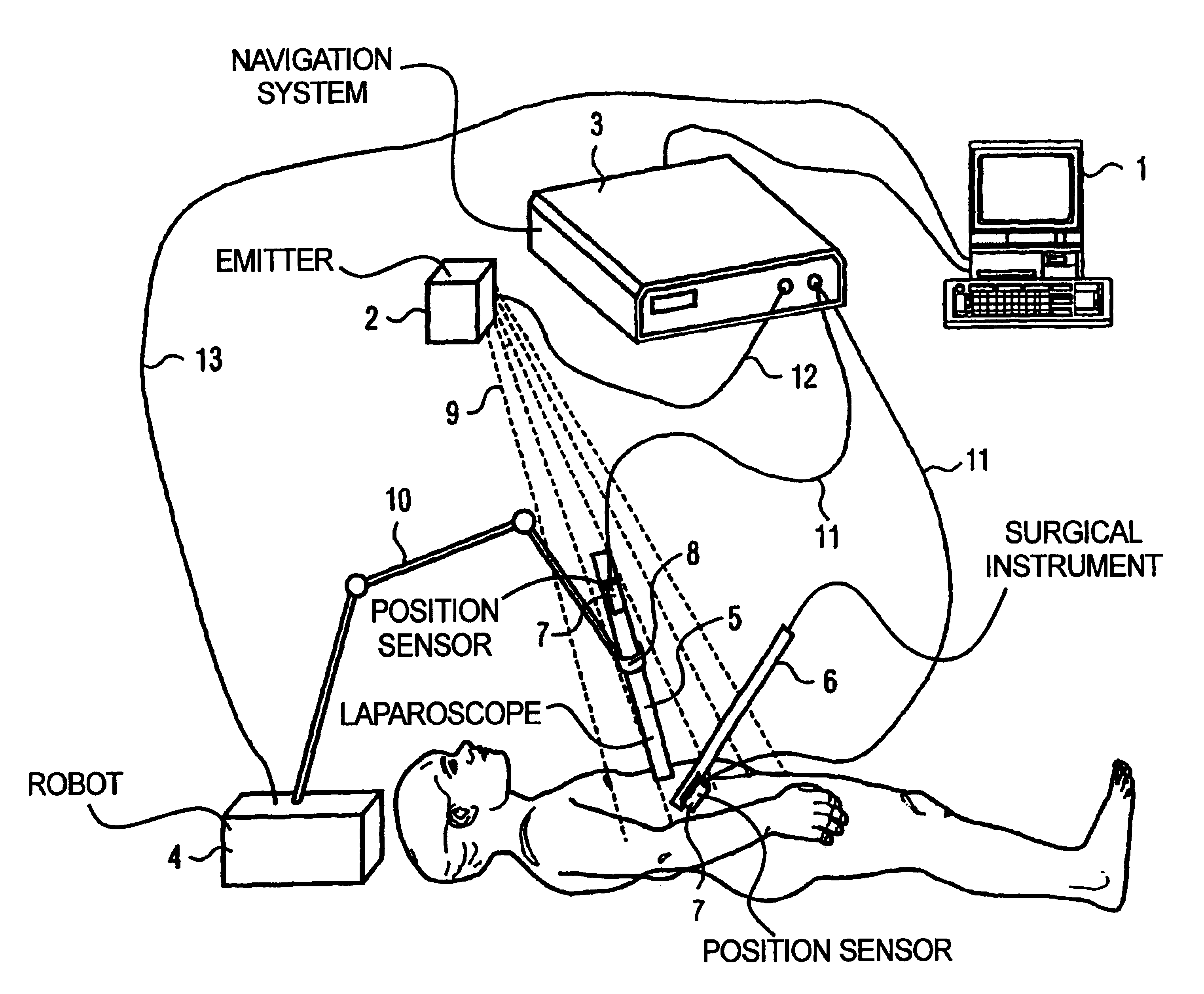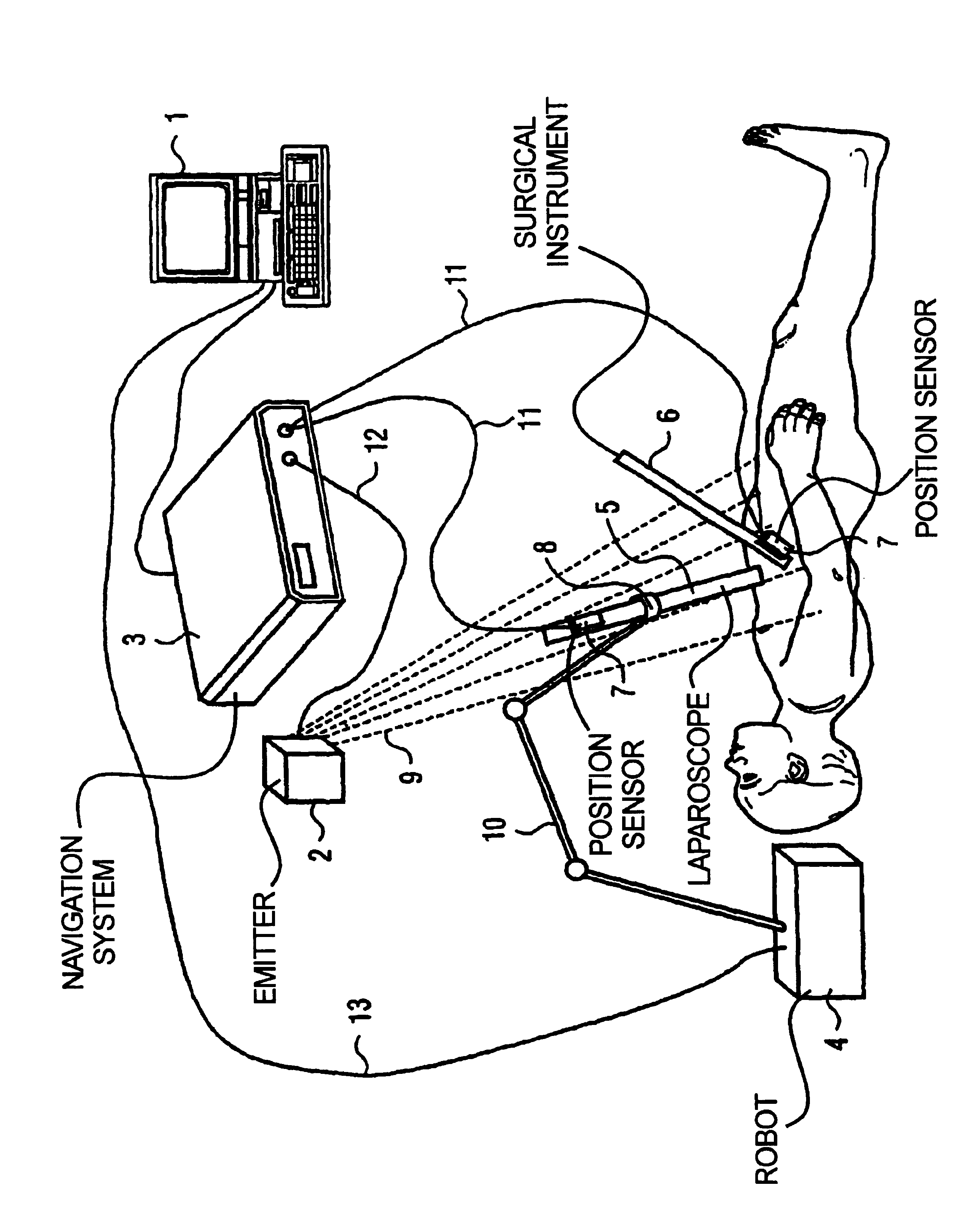Fully automatic, robot-assisted camera guidance system employing position sensors for laparoscopic interventions
a robotic assistant and camera guidance technology, applied in the field of surgical intervention operation systems, can solve the problems of insufficient follow-up of the camera by an op assistant during the operation, inconvenient operation, and inconvenient operation, and achieve the effect of more space in the body
- Summary
- Abstract
- Description
- Claims
- Application Information
AI Technical Summary
Benefits of technology
Problems solved by technology
Method used
Image
Examples
Embodiment Construction
[0028]As shown in the FIGURE, the camera or the laparoscope 5 is introduced into the body of the patient, for example in the region of the epigastrium in FIG. 1, and is moved with a robot arm 10 with the assistance of the robot 4—the laparoscope 5 is thereby fixed to the robot arm 10 via an instrument mount 8.
[0029]The laparoscope 5 as well as one or more surgical instruments 6 are provided with position sensors 7 that generate orientation information with whose assistance the positions of the laparoscope 5 and of the surgical instrument 6 can be calculated in the navigation system 3 and forwarded to a control computer 1. The position acquisition and calculation can ensues continuously or at intervals.
[0030]The example shown in the FIGURE proceeds on the basis of an electromagnetic navigation system wherein an electromagnetic field 9 is emitted by an emitter 2 that is connected via an interface 12 to the navigation system 3 or, respectively, a central unit of the navigation system. ...
PUM
 Login to View More
Login to View More Abstract
Description
Claims
Application Information
 Login to View More
Login to View More - R&D
- Intellectual Property
- Life Sciences
- Materials
- Tech Scout
- Unparalleled Data Quality
- Higher Quality Content
- 60% Fewer Hallucinations
Browse by: Latest US Patents, China's latest patents, Technical Efficacy Thesaurus, Application Domain, Technology Topic, Popular Technical Reports.
© 2025 PatSnap. All rights reserved.Legal|Privacy policy|Modern Slavery Act Transparency Statement|Sitemap|About US| Contact US: help@patsnap.com


